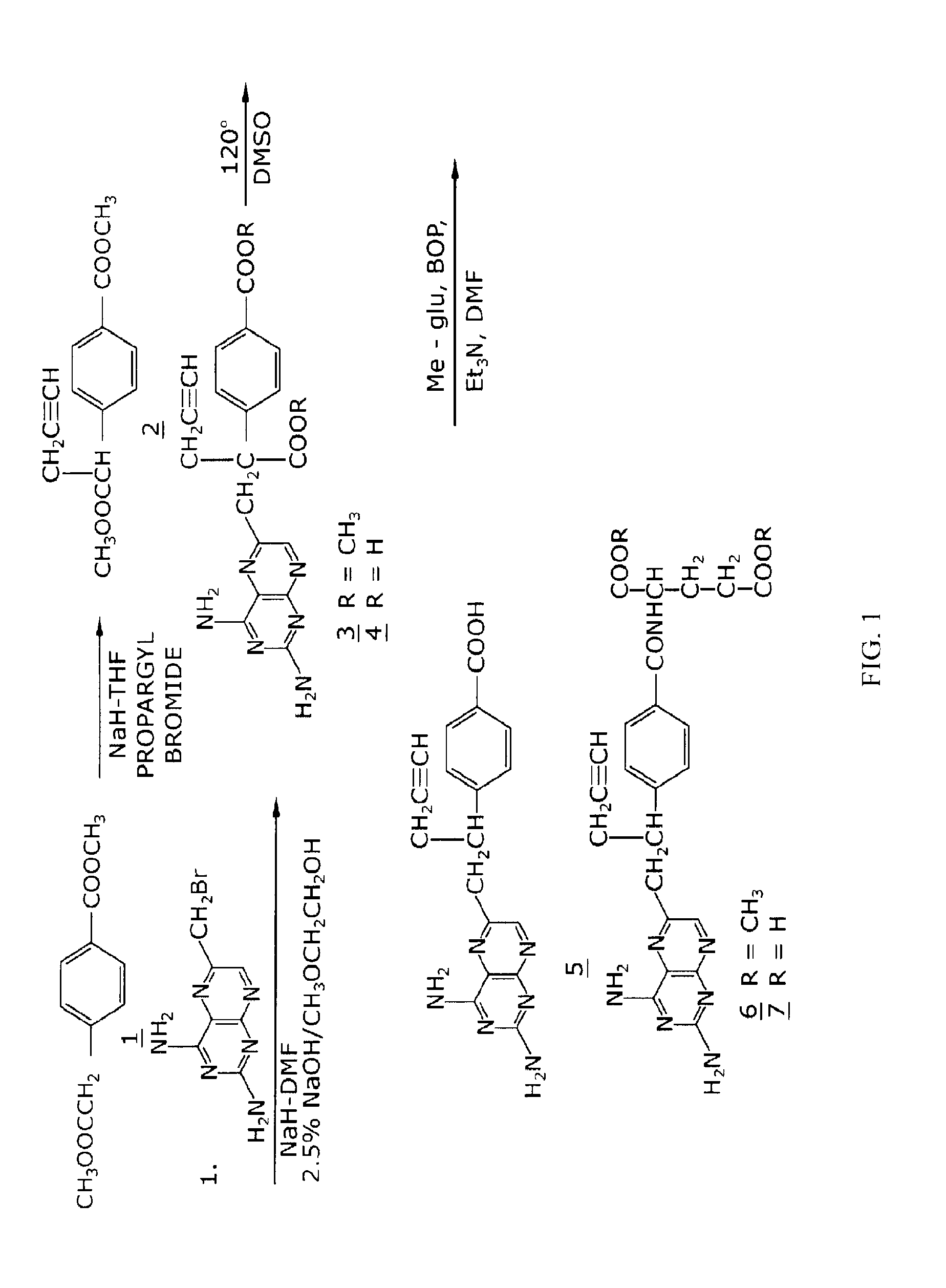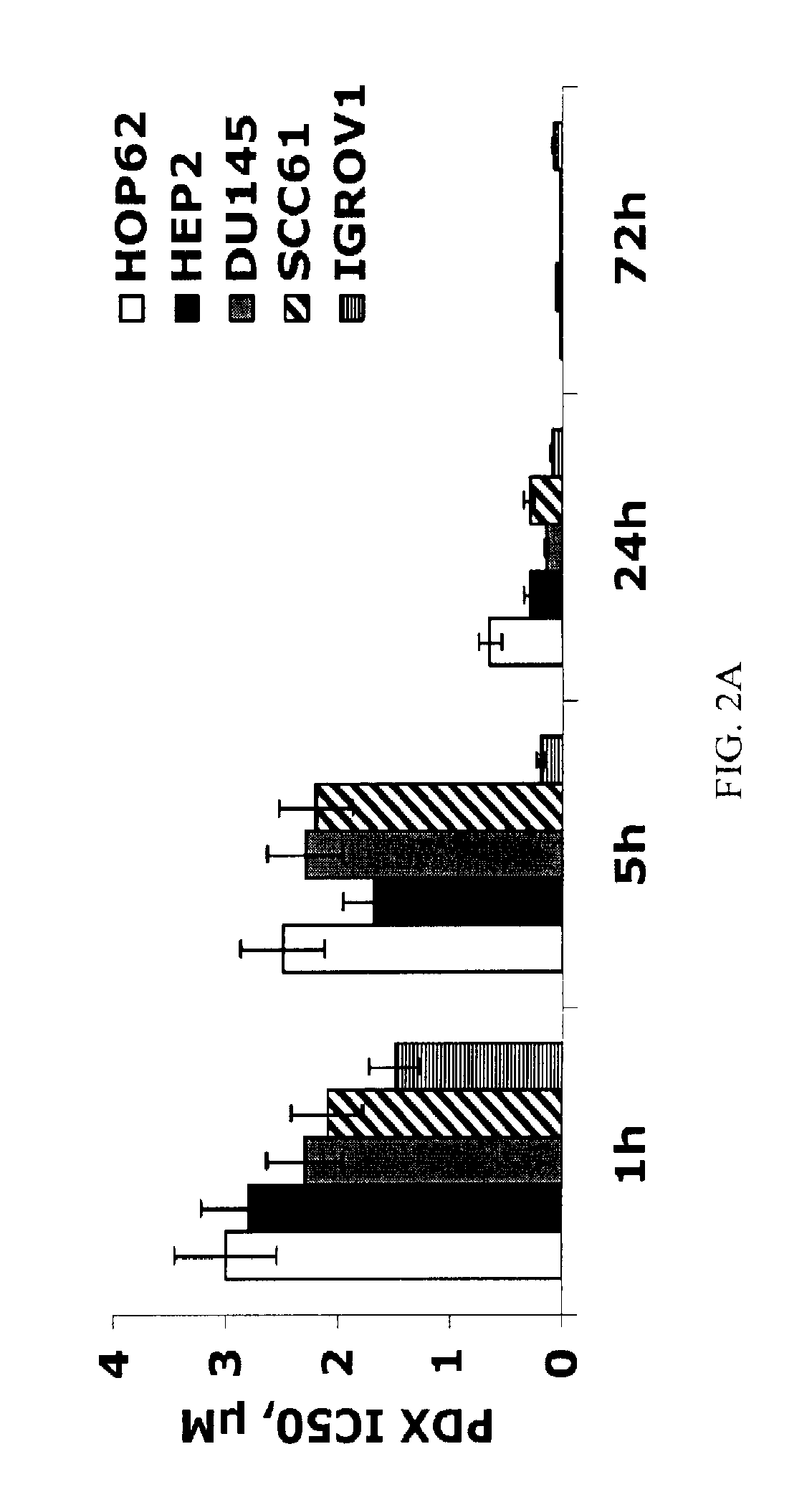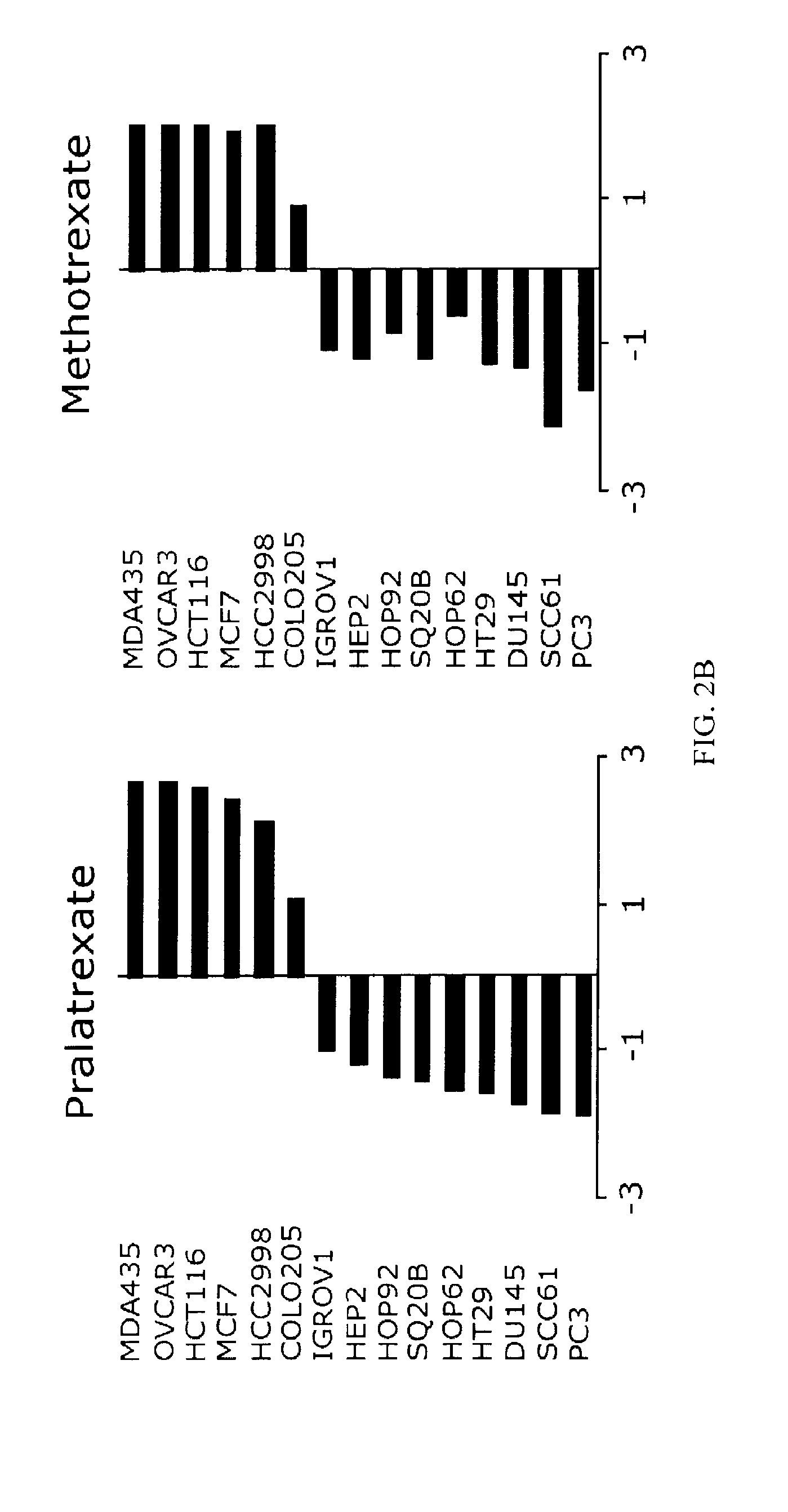Methods for Treating Methotrexate-Resistant Disorders with 10-Propargyl-10-Deazaaminopterin
a technology of methotrexate and methotrexate-resistant disorders, which is applied in the direction of biocide, heterocyclic compound active ingredients, drug compositions, etc., can solve the problems of treatment failure and treatment effectiveness drop
- Summary
- Abstract
- Description
- Claims
- Application Information
AI Technical Summary
Benefits of technology
Problems solved by technology
Method used
Image
Examples
example 1
[0061]FIG. 1 shows a synthetic scheme useful in preparing 10-propargyl-10-deazaminopterin. A mixture of 60% NaH in oil dispersion (1.06 g, 26.5 mmol) in 18 mL of sieve-dried THF was cooled to 0° C. The cold mixture was treated with a solution of homoterephthalic acid dimethyl ester (5.0 g, 24 mmol compound 1 in FIG. 1) in dry THF (7 mL), and the mixture was stirred for 1 hour at 0° C. Propargyl bromide (26.4 mmol) was added, and the mixture was stirred at 00° C. for an additional 1 hour, and then at room temperature for 16 hours. The resulting mixture was treated with 2.4 mL of 50% acetic acid and then poured into 240 mL of water. The mixture was extracted with ether (2×150 mL). The ether extracts were combined, dried over Na2SO4, and concentrated to an orange-yellow oil. Chromatography on silica gel (600 mL of 230-400 mesh) with elution by cyclohexane-EtOAc (8:1) gave the product α-prop argylhomoterephthalic acid dimethyl ester (compound 2) as a white solid (4.66) which appeared by...
example 2
[0068]To explore the activity of 10-propargyl-10-deazaminopterin across different solid tumor types, 15 human solid tumor cell lines were investigated for their sensitivity to the cytotoxic activity of 10-propargyl-10-deazaminopterin.
[0069]Materials and Methods: Cell Lines
[0070]A panel of colon (HT29, HCT116, COLO205, HCC2998), breast (MCF7, MDA-MB-435), lung (HOP62, HOP92), ovarian (OVCAR3, IGROV1), prostate (DU145, PC3), and head and neck (SCC61, HEP2, SQ20B) human cancer cell lines was purchased from the ATCC (Rockville, Md.) and National Cancer Institute collections. Cells were grown as monolayers in RPMI medium supplemented with 10% fetal calf serum, 2 mM glutamine, 100 units ml−1 penicillin and 100 μM ml−1 streptomycin.
[0071]Cell Cytotoxicity Assays
[0072]All the data generated was the result of three separate experiments performed in duplicate. Cell viability was determined using the MTT assay, which was carried out as described previously (Hansen, 1989). Briefly, cells were s...
example 3
[0083]Development of 10-propargyl-10-deazaminopterin and methotrexate resistant cell lines.
[0084]To characterize the predictive factors of 10-propargyl-10-deazaminopterin antiproliferative effects, the cell lines DU-PDX and HEP-PDX were developed from parental DU145 and HEP2 cells, respectively, by exposure to stepwise increasing concentrations of 10-propargyl-10-deazaminopterin over a period of 6 months. Resulting DU-PDX and HEP-PDX cells were at least 200- and 500-fold less sensitive to 10-propargyl-10-deazaminopterin than parental cells. After 5 passages in drug-free medium the resistant cells retained their drug resistance, suggesting stability of these cell lines.
[0085]To compare the mechanisms of 10-propargyl-10-deazaminopterin and methotrexate resistance, the cell lines DU-MTX and HEP-MTX were developed from parental DU145 and HEP2 cells by exposure to stepwise increasing concentrations of methotrexate. DU-MTX and HEP-MTX displayed resistance to methotrexate and 10-propargyl-...
PUM
| Property | Measurement | Unit |
|---|---|---|
| temperature | aaaaa | aaaaa |
| temperature | aaaaa | aaaaa |
| temperature | aaaaa | aaaaa |
Abstract
Description
Claims
Application Information
 Login to View More
Login to View More - R&D
- Intellectual Property
- Life Sciences
- Materials
- Tech Scout
- Unparalleled Data Quality
- Higher Quality Content
- 60% Fewer Hallucinations
Browse by: Latest US Patents, China's latest patents, Technical Efficacy Thesaurus, Application Domain, Technology Topic, Popular Technical Reports.
© 2025 PatSnap. All rights reserved.Legal|Privacy policy|Modern Slavery Act Transparency Statement|Sitemap|About US| Contact US: help@patsnap.com



